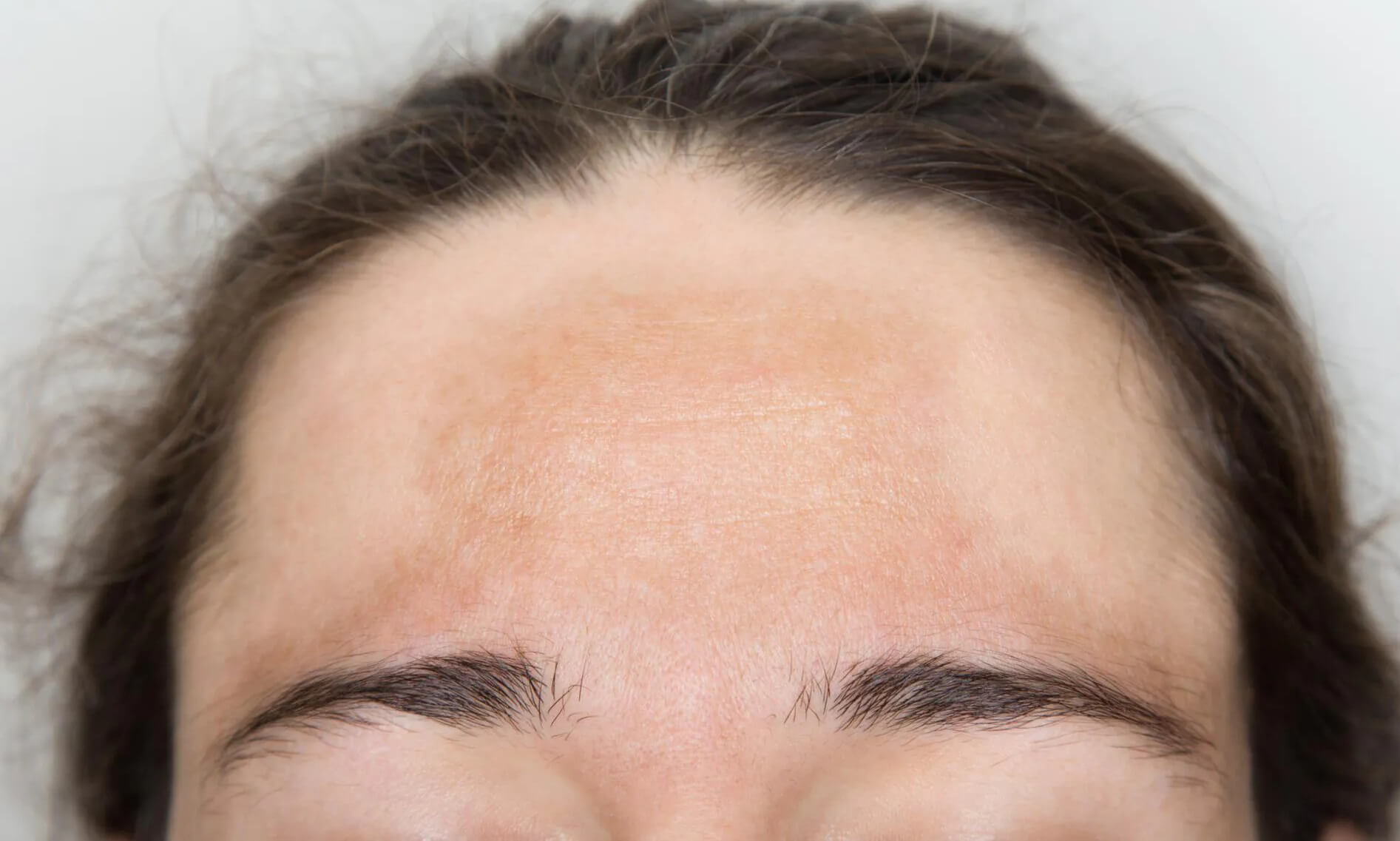What is Melasma
Melasma is a skin condition causing brown or grayish-brown patches on the face. Often referred to as the “mask of pregnancy”, these patches often appear symmetrically on the cheeks, forehead, nose, and upper lip. While it’s harmless, melasma can be emotionally distressing for many people due to its noticeable appearance.
While treatments can significantly reduce melasma, it’s often chronic with dark patches potentially returning, especially with triggers like sun exposure or hormonal changes. Sometimes, melasma treatment can backfire, leading to more prominent brown patches instead of improvement. In today’s blog post, we’ll uncover those common mistakes.
Cause of Melasma, An In-Depth Look!
The exact cause of melasma is not fully understood, but it’s believed to be influenced by a combination of factors including, but not limited to:
Hormonal changes: Pregnancy, birth control pills, perimenopause, menopause, and hormone replacement therapy can trigger melasma.
Sun exposure: Ultraviolet (UV) radiation from the sun can worsen melasma and make it harder to treat.
Genetics: A family history of melasma may increase your risk.
Other factors: Stress, certain medications, and underlying medical conditions like thyroid, liver issues, autoimmune diseases, and PCOS can contribute to melasma development.

Can Melasma be Cured Completely?
There are many effective treatments available to reduce the appearance of melasma significantly. It’s important to understand that the condition is often chronic. However, it needs to be understood that melasma cannot be cured permanently. This means the dark patches can fade with treatment but may return, especially if triggered by sun exposure or hormonal changes.
Think of it like managing a chronic condition like acne or eczema. You can effectively control it with the right treatments and lifestyle modifications, but it might require ongoing care to prevent flare-ups.
It’s also crucial to remember that every individual’s experience with melasma is unique. Some people may see remarkable improvement and long-lasting results, while others may face more challenges.
Common Mistakes in Melasma Treatment
While there are important measures you can take during your melasma treatment, it’s equally important to avoid common mistakes that can worsen the condition. Understanding these mistakes will help you optimize your treatment plan and achieve better results. Let’s discuss them one by one.

1. Skipping or Improper Sunscreen Use
Sun exposure is a major trigger for melasma, so neglecting sunscreen is a common mistake that can sabotage your melasma treatment efforts. Many people underestimate the importance of consistent and proper sunscreen application.
UV rays stimulate melanin production, resulting in the melasma patches’ darkening. Regular sunscreen use acts as a shield, protecting your skin from harmful sun radiation. Even if you’ve achieved significant improvement with treatments, without adequate sun protection, melasma can easily return or worsen.
Many people apply insufficient sunscreen or forget to reapply throughout the day, reducing its effectiveness.
To maximize sun protection:
- Choose a broad-spectrum sunscreen with an SPF of 30 or higher.
- Apply generously to all exposed skin, including your face, neck, and hands, at least 15 minutes before sun exposure.
- Reapply every two hours, or more frequently if swimming or sweating.
- Seek shade during peak sun hours (10 am to 2 pm).
By prioritizing sun protection, you’ll significantly enhance your melasma treatment outcomes and prevent future flare-ups.

2. Over-reliance on In-Office Treatments
Many people with melasma turn to in-office procedures for quick fixes, like laser treatments, chemical peels, and microneedling. While these can be effective when used correctly, they’re not a one-size-fits-all solution. Often, people didn’t find any improvement in their melasma with in-office treatments.
Here are the reasons:
- Temporary Results: In-office procedures might offer short-term improvements, but melasma is chronic. Without addressing underlying causes and consistent skincare, it often returns.
- Potential Side Effects: Aggressive treatments can irritate the skin, sometimes causing post-inflammatory hyperpigmentation (PIH), which can worsen the melasma.
- Neglecting Sun Protection: Focusing solely on treatments while ignoring sun protection can hinder progress and lead to recurrence.
3. Ignoring Specific Melasma-Fighting Ingredients
While many skincare products promise to brighten and even skin tone, not all ingredients are created equal when it comes to targeting melasma. Using products without targeted ingredients can lead to frustration and a waste of money and time if you don’t see the desired results.
For melasma treatment, you need specific ingredients that can target the overactive melanin production process. Many generic brightening products lack the punch to tackle melasma effectively.
Dermatologists recommend ingredients like Hydroquinone, Tretinoin, Tranexamic acid, and Azelaic acid because research shows they have the power to reduce melanin production. These ingredients work by regulating the enzymes and pathways that create melanin in the first place.
They also exfoliate and lighten existing pigmentation by gently removing the top layer of skin where excess melanin resides, these ingredients help fade existing melasma patches and promote a more even tone.
While Powerful, Use with Care:
While Hydroquinone, Tretinoin, and Tranexamic acid are effective, it’s important to use them as directed by a dermatologist and not overdo it. Overusing these ingredients can lead to:
- Increased irritation: Dryness, redness, and peeling are common side effects that can worsen with excessive use.
- Sun sensitivity: These ingredients can make your skin more sensitive to sunlight, so sun protection is crucial.

4. Overusing of Hydroquinone
Hydroquinone is a potent ingredient often used to treat melasma, but excessive or prolonged use can lead to adverse effects. It is among one of the most common mistakes that can irritate your skin, causing dryness, redness, and peeling. The skin can become reliant on hydroquinone, making it less responsive to treatment over time.
Long-term or high-concentration hydroquinone use has been linked to ochronosis, a rare but potentially irreversible condition causing blue-black discoloration of the skin.
It’s crucial to use hydroquinone under the guidance of a dermatologist and follow their recommended dosage and duration. Additionally, combining hydroquinone with other brightening agents and taking regular breaks can help minimize risks.
5. Inconsistent Treatment Routine
Consistency is key to melasma treatment. Skipping treatments or following an irregular routine can hinder progress and prevent optimal results. Also, seeing inconsistent results can be discouraging and lead to giving up on treatment altogether.
Melasma requires ongoing care. Develop a skincare regimen tailored to your melasma concerns and stick to it. Use alarms or reminders to help you stay on track. Remember that treating melasma takes time. Consistency is more important than quick fixes.
If you’re not seeing improvement, you might be wasting precious time and money on products or treatments that could be effective if used consistently.
6. Neglecting Underlying Causes
Another common mistake in melasma treatment is focusing solely on topical treatments to address melasma. It may result in temporary improvements and frequent relapses if we disregard the underlying factors that may contribute to the condition. Identifying and managing underlying factors can significantly enhance treatment outcomes and prevent future recurrences.
To achieve long-term success in managing melasma, consider these steps:
- Consult a Dermatologist: A dermatologist can evaluate your overall health and identify any potential contributing factors.
- Address Hormonal Issues: Hormonal fluctuations during pregnancy, menopause, and thyroid can also exacerbate melasma. If hormonal changes are involved, discuss birth control options or other hormonal treatments with your gynecologist or endocrinologist.
- Manage Stress: Incorporate stress-reduction techniques like meditation, yoga, or deep breathing into your routine.
- Evaluate Medications: Some medications can contribute to melasma. Discuss with your doctor about potential alternatives.
- Healthy Diet: Any specific foods haven’t been definitively linked to melasma, however, some believe that a diet high in sugar and processed food might worsen it.
By addressing both the surface manifestations and underlying causes of melasma, you can increase your chances of achieving lasting improvement.
Melasma vs Hyperpigmentation
Hyperpigmentation
Hyperpigmentation is a broad term that refers to any skin discoloration that is darker than the surrounding skin. A variety of conditions such as freckles, age spots, sun damage, and acne scars. These are some examples that can be fitted into this category.
Melasma
This is a type of hyperpigmentation. It specifically refers to brown or grayish-brown patches on the face, often appearing symmetrically on the cheeks, forehead, nose, and upper lip. Melasma is often triggered by hormonal changes, sun exposure, and genetics.
Key Differences
- Cause: Hyperpigmentation has various causes, while melasma is primarily linked to hormones and sun exposure.
- Appearance: Hyperpigmentation can appear in different forms (freckles, age spots, etc.), while melasma is characterized by specific patches on the face. Remember, all melasma is hyperpigmentation, but not all hyperpigmentation is melasma.
- Treatment: While some treatments overlap, melasma can be more challenging to treat due to hormonal factors.

Melasma in Men
While melasma is often associated with women, it can also affect men. Although less common, it can be equally bothersome for male patients.
Causes of Melasma in Men
While the exact causes of melasma in men aren’t fully understood, some factors may contribute to its development:
- Sun exposure: Similar to women, excessive sun exposure can trigger or worsen melasma in men.
- Hormonal factors: While less common in men than in women, hormonal imbalances can play a role in some cases.
- Genetics: A family history of melasma may increase the risk for men.
- Medications: Certain medications like Finasteride can contribute to melasma in men.
Symptoms of Melasma in Men
The formation of melasma in men is similar to that in women, with brown or gray-brown patches appearing on the face, often on the cheeks, forehead, nose, and upper lip. These patches can vary in size and intensity.
Melasma Treatment for Men
Treatment options for melasma in men are similar to those for women and include:
- Topical treatments: Creams containing hydroquinone, retinoids, azelaic acid, or kojic acid can help lighten the patches.
- Chemical peels: These can help improve skin texture and reduce pigmentation. However, these kinds of harsh treatments can irritate the skin, possibly causing post-inflammatory hyperpigmentation (PIH), which can aggravate melasma. Remember all those treatments that give heat to your skin can backfire. So be very very careful.
- Laser therapy: This can be effective in some cases ( not in all cases ) but may require multiple sessions.
- Sun protection: Using a broad-spectrum sunscreen with SPF 30 or higher is essential to prevent worsening of melasma.

Conclusion
Melasma can be a frustrating skin condition, but with proper treatment and lifestyle modifications, you can achieve significant improvement and prevent future outbreaks. Remember, consistency is key. By following a regular skincare routine that incorporates sun protection, targeted ingredients, and addresses underlying causes, you can manage your melasma and achieve a more even and radiant complexion. If you have any concerns about melasma, consult a dermatologist to develop a personalized treatment plan.

